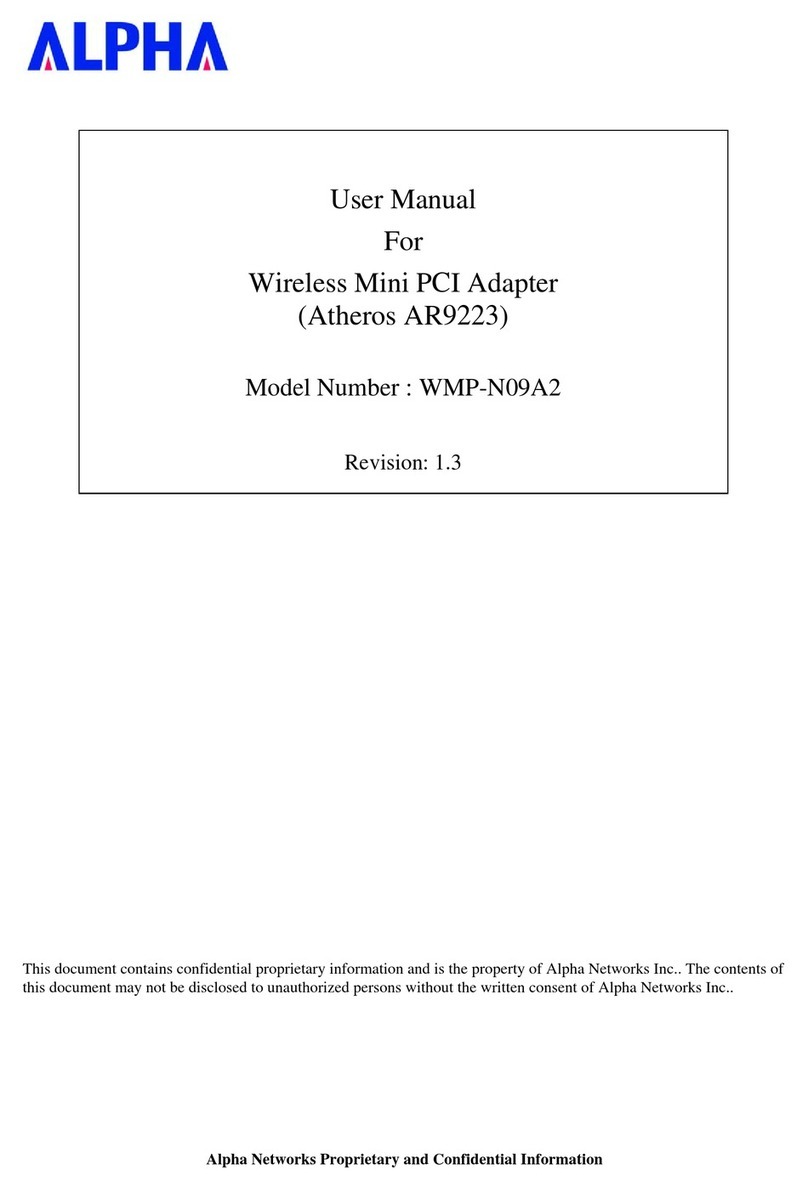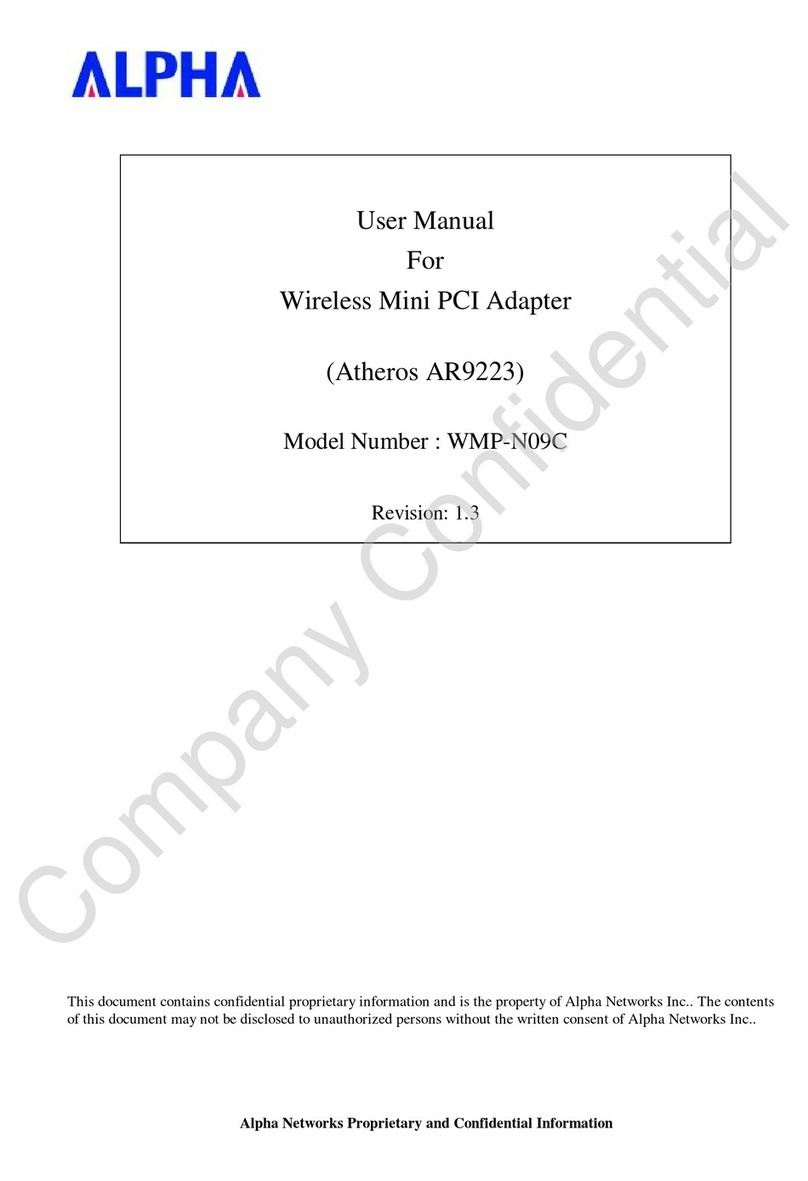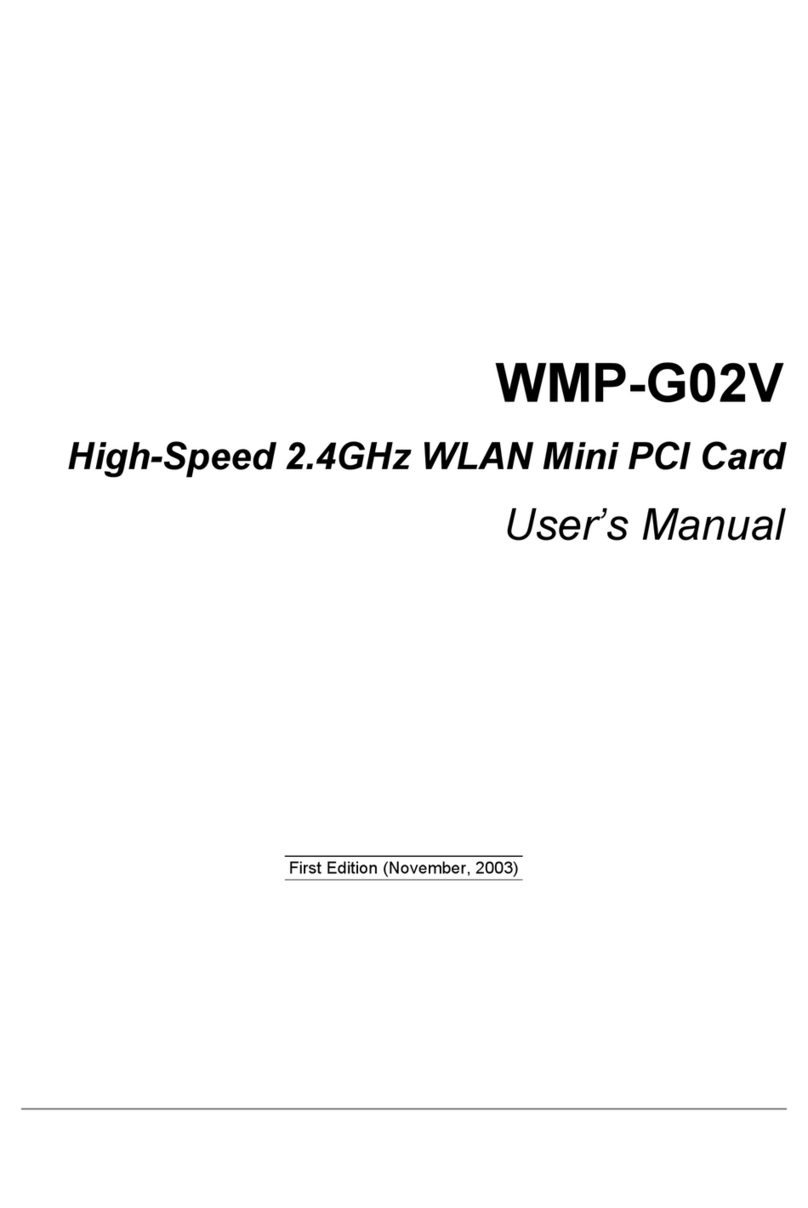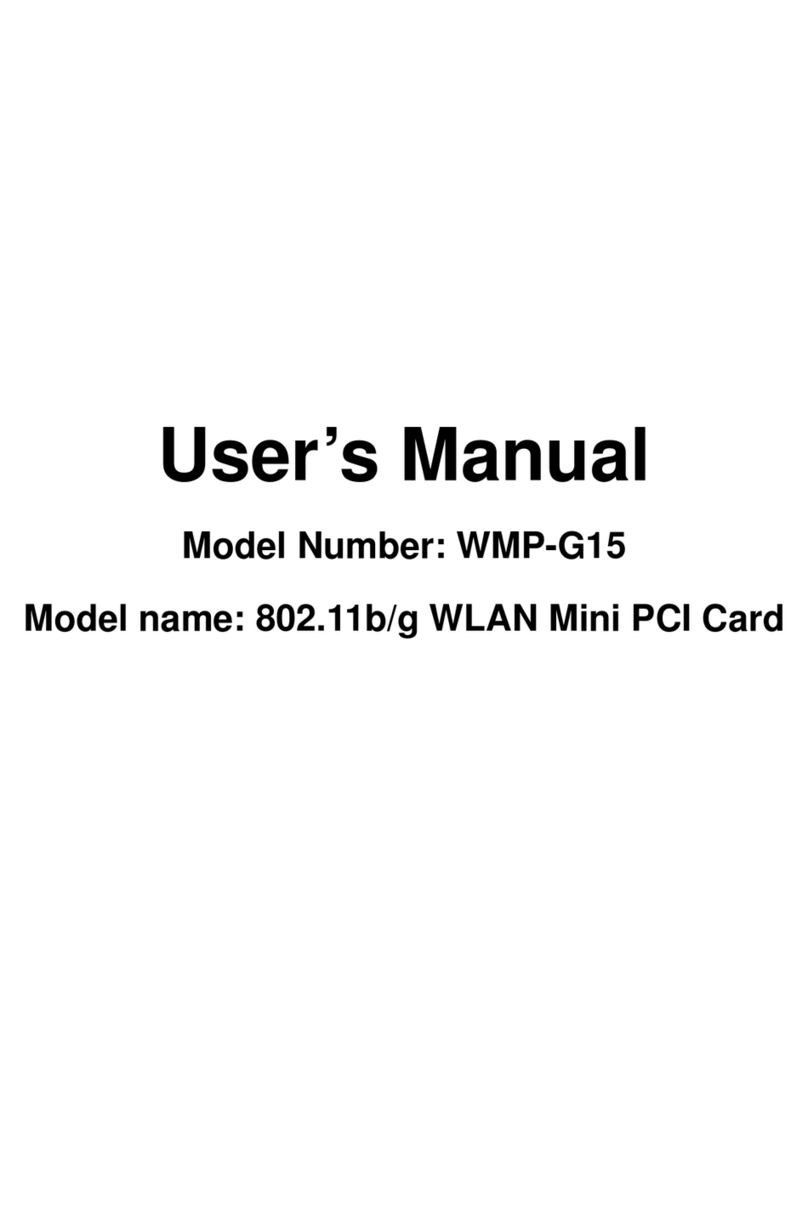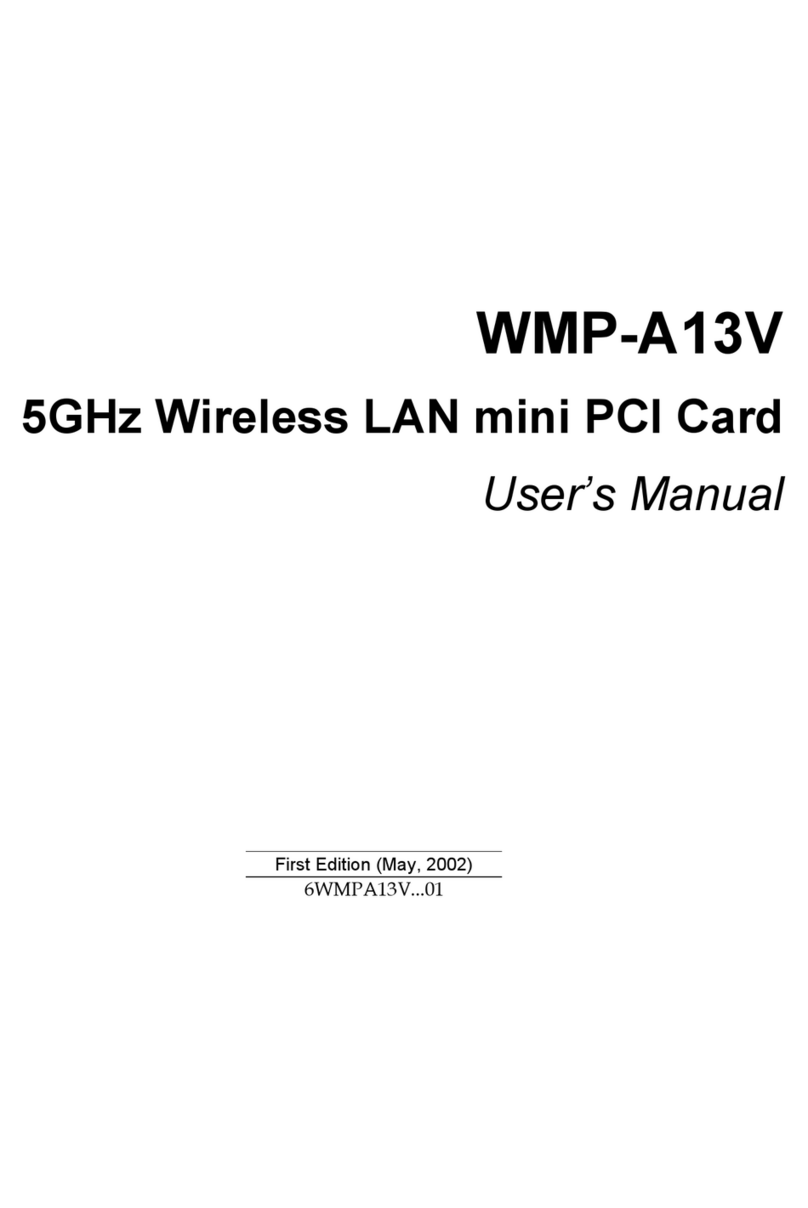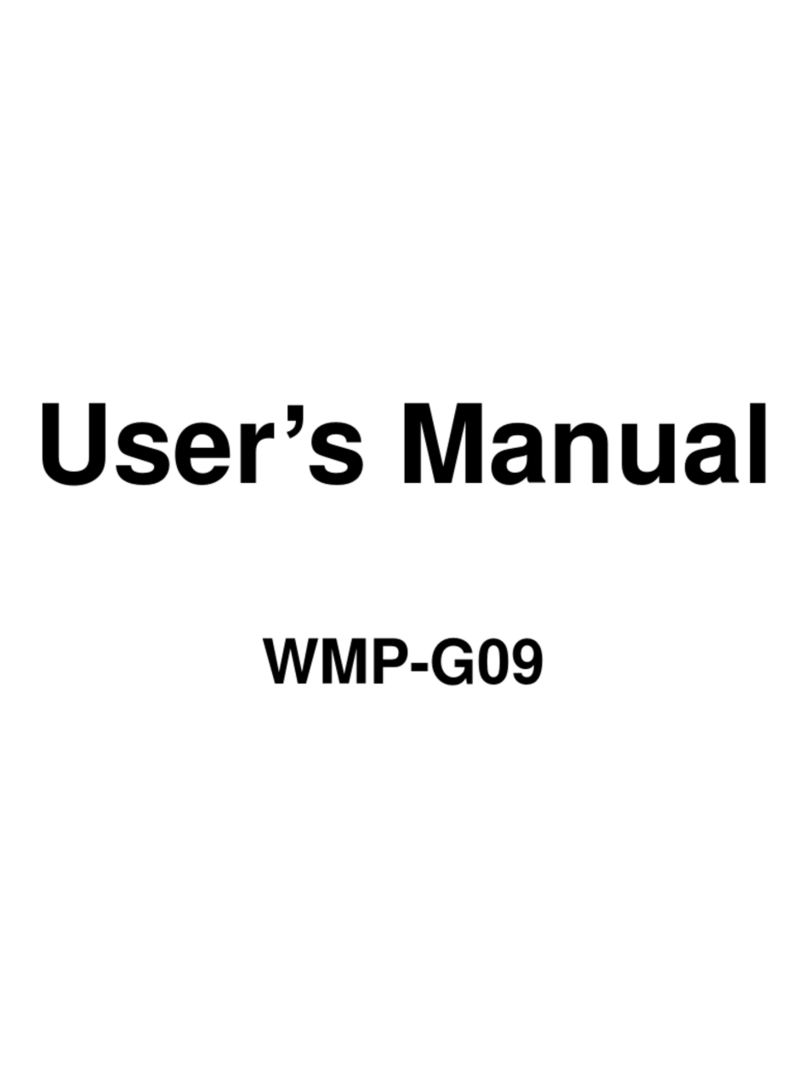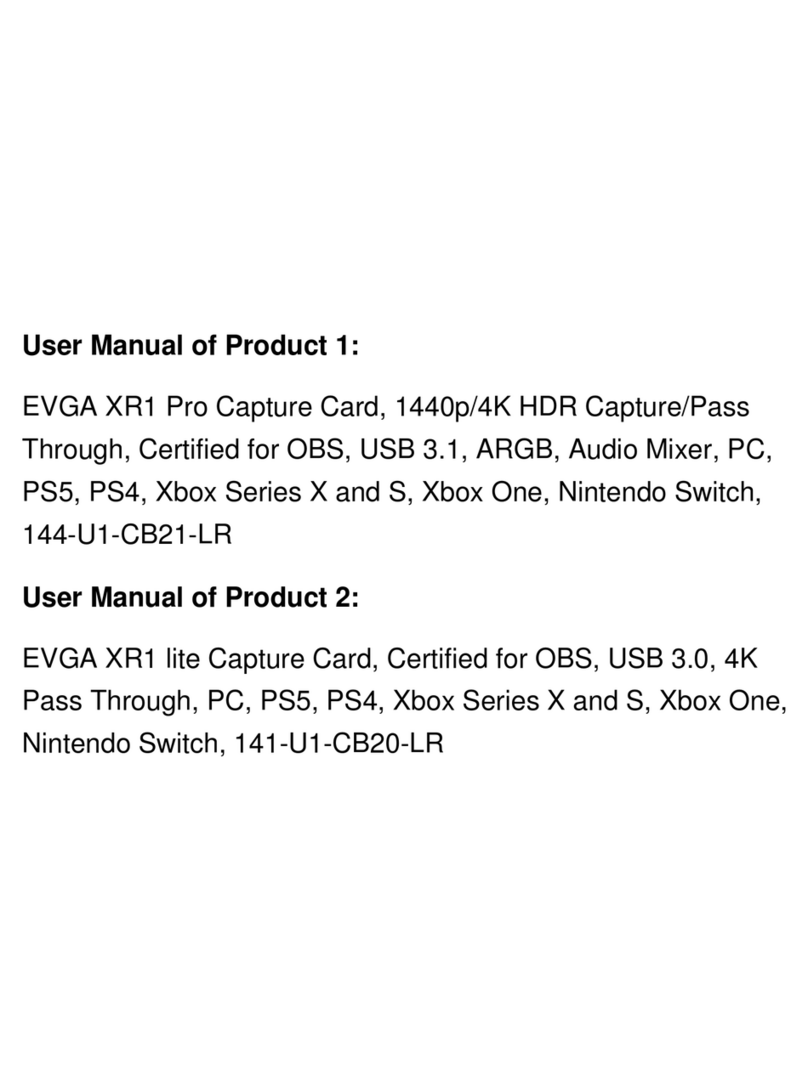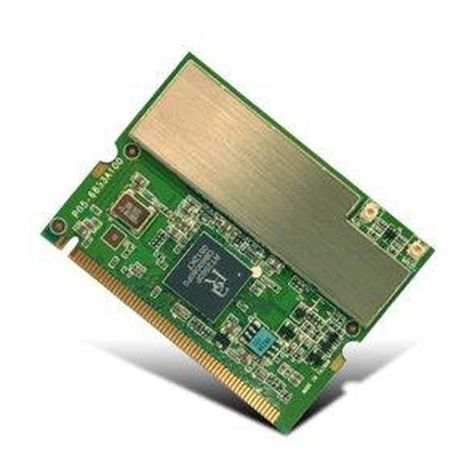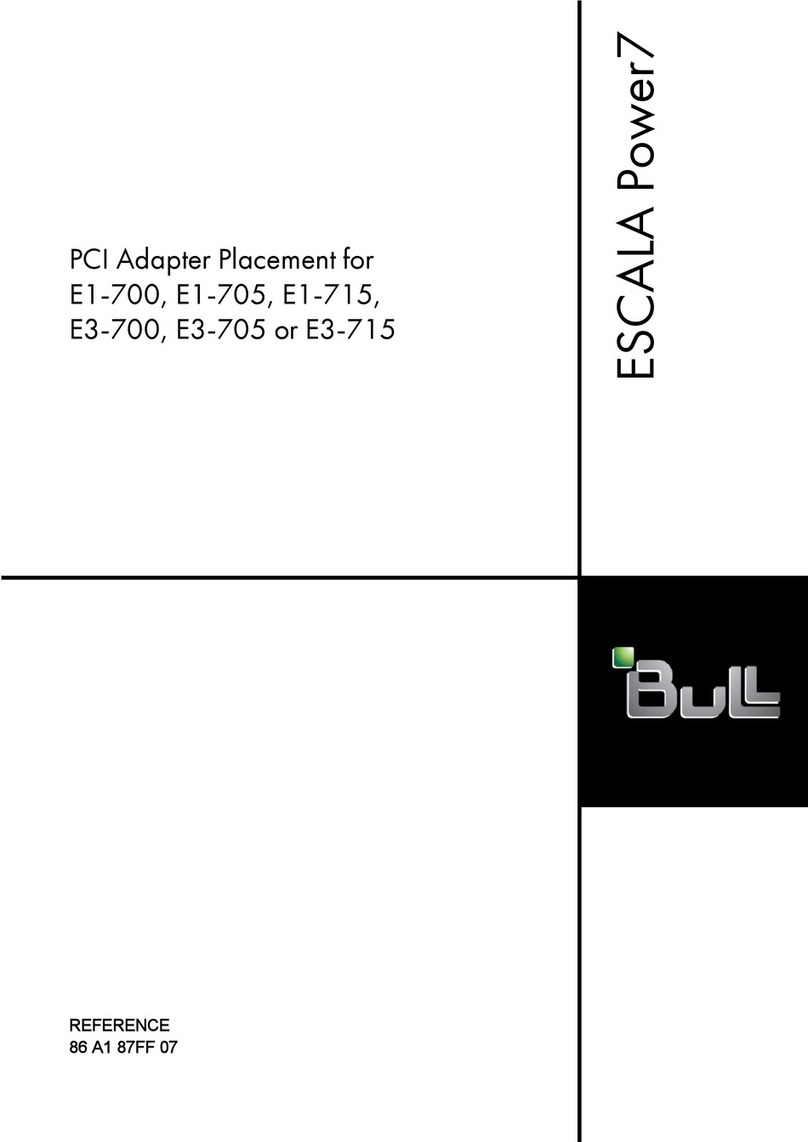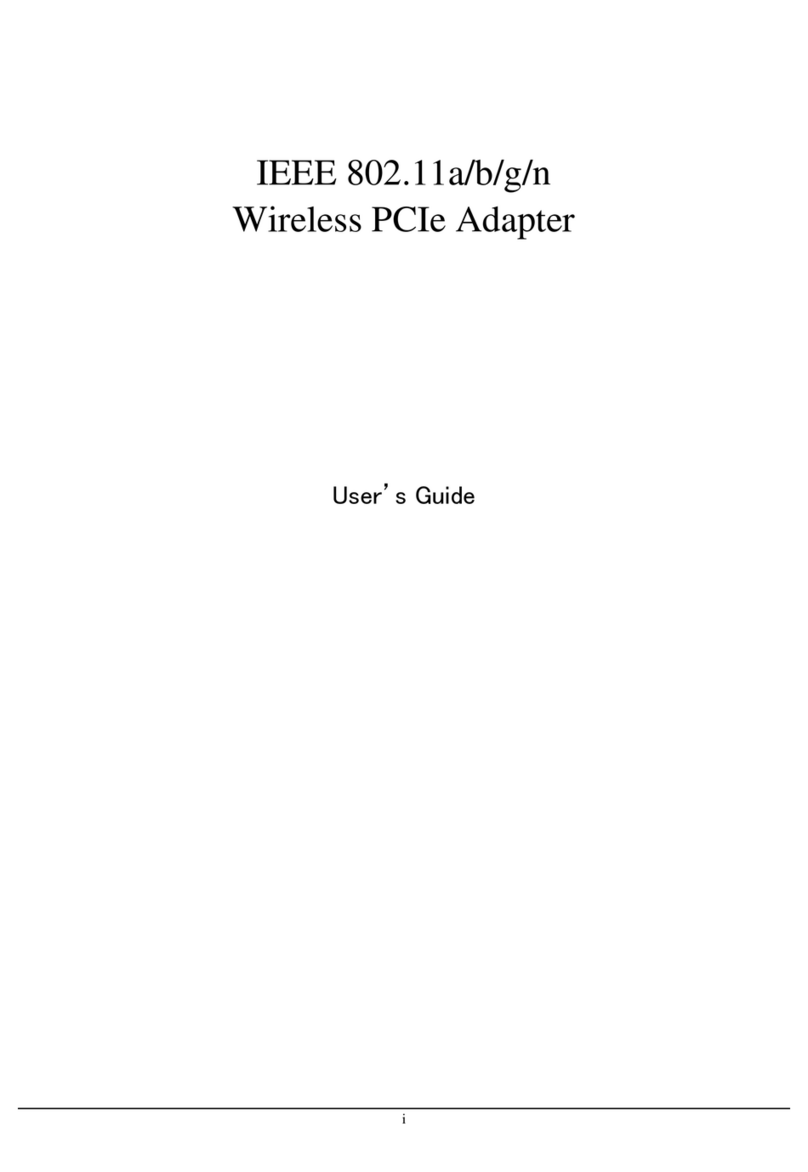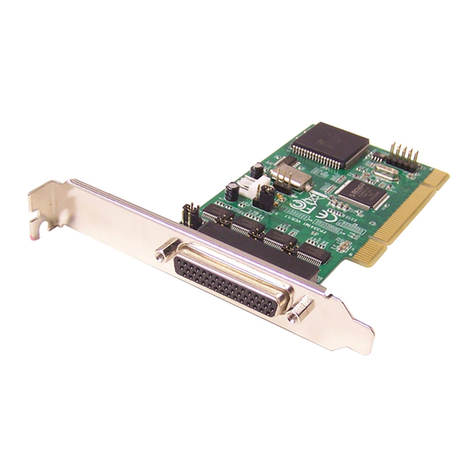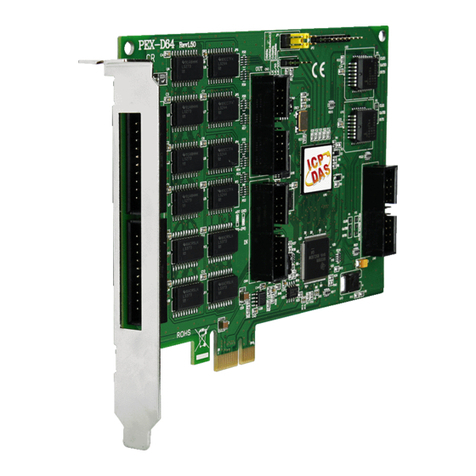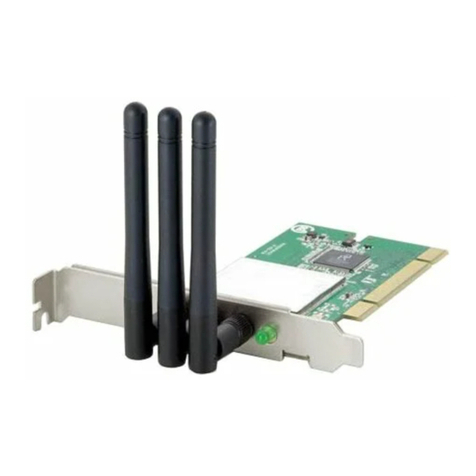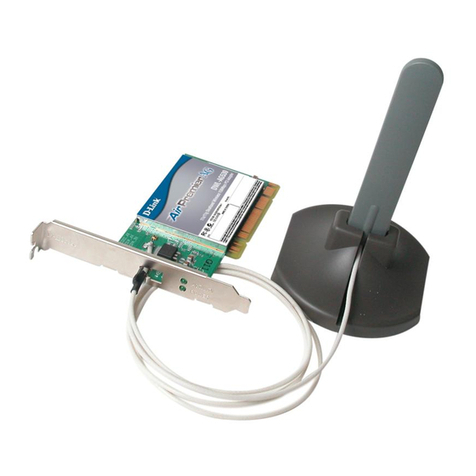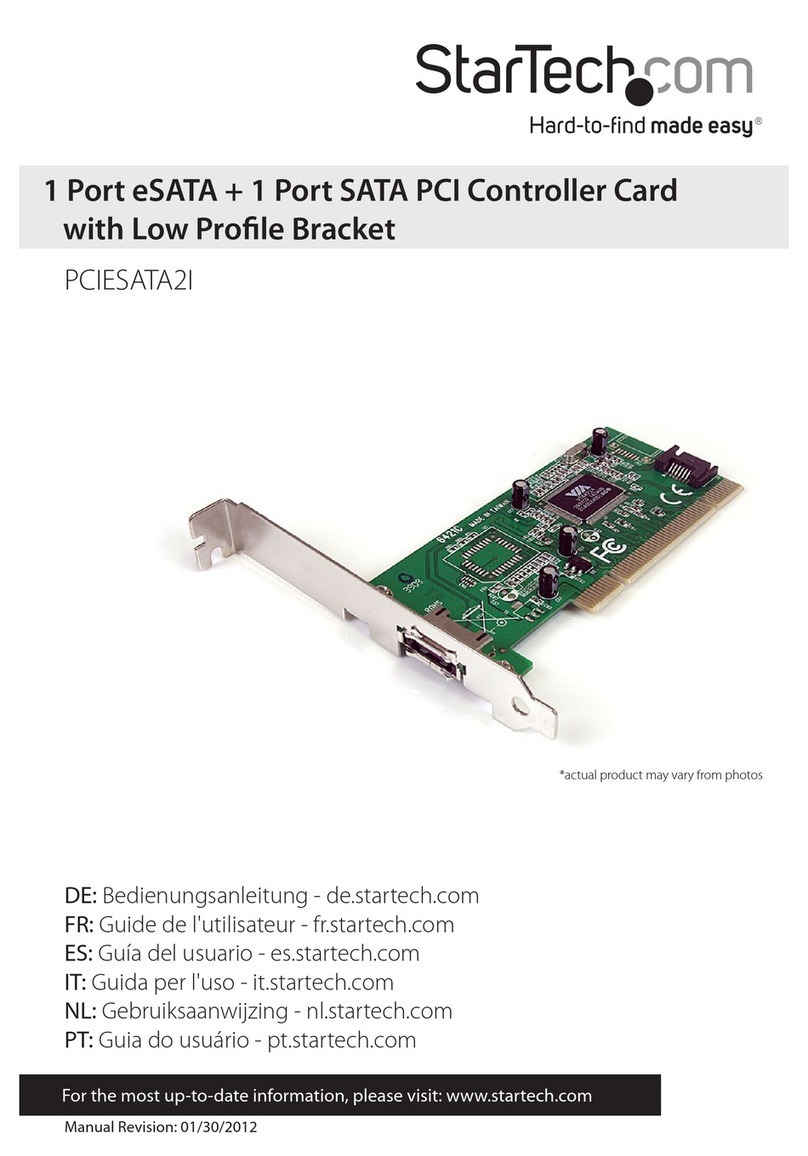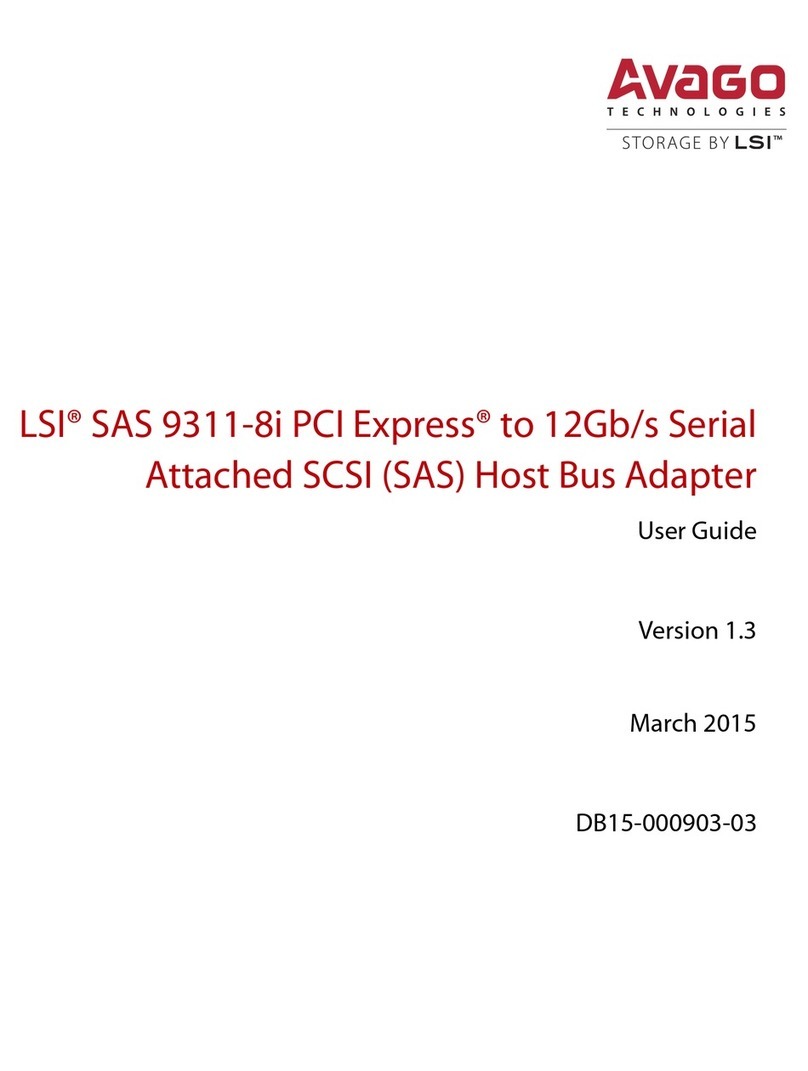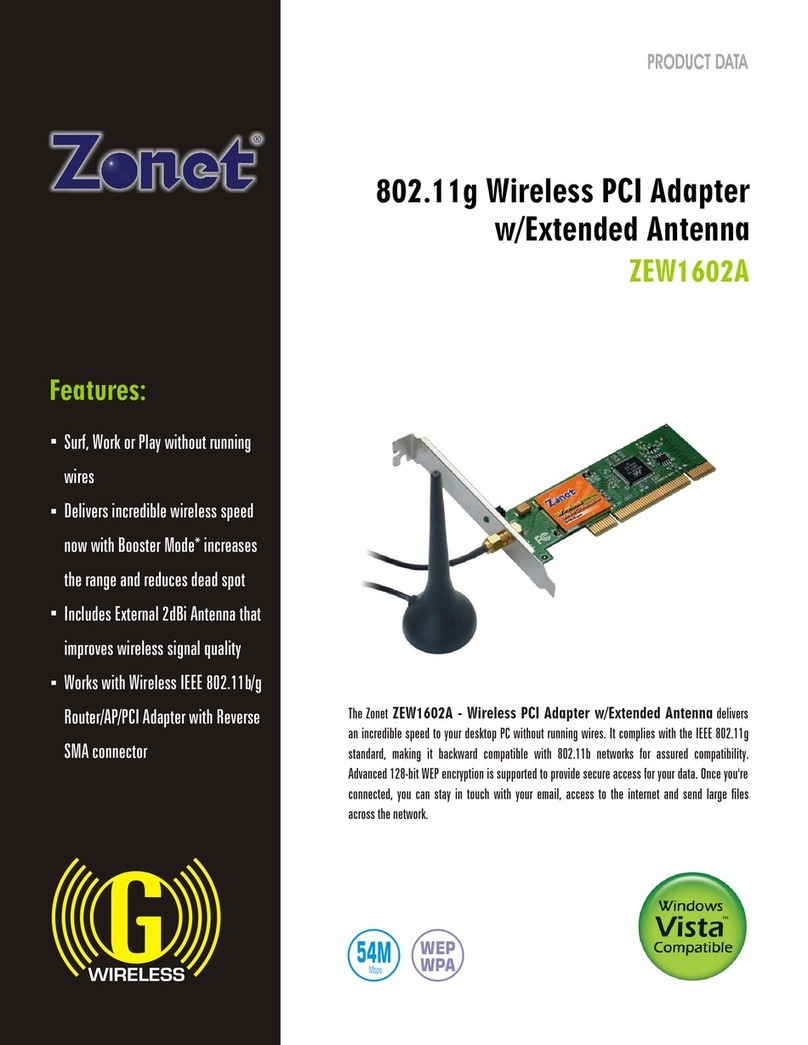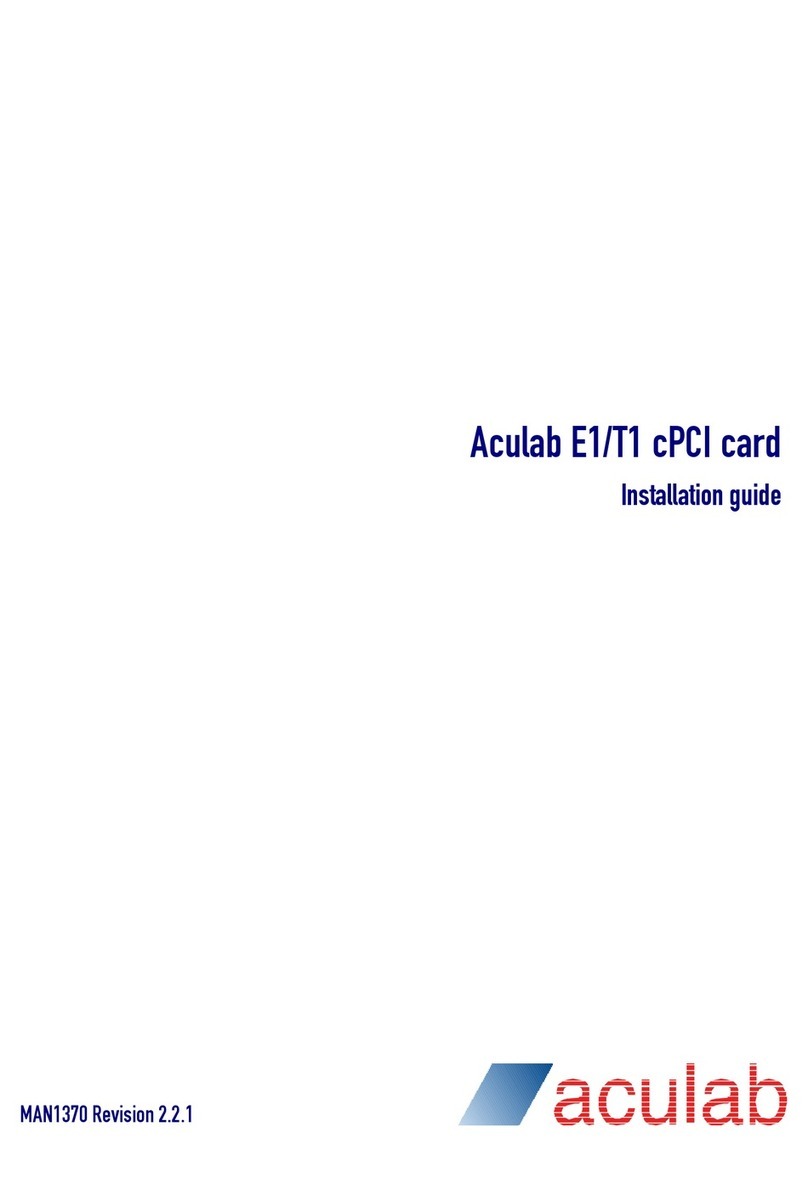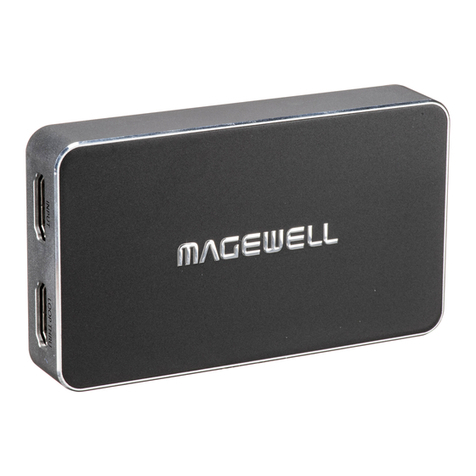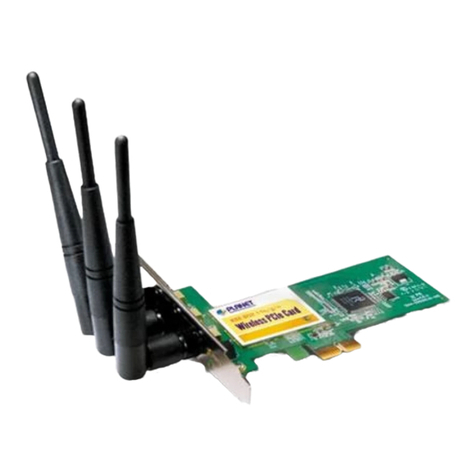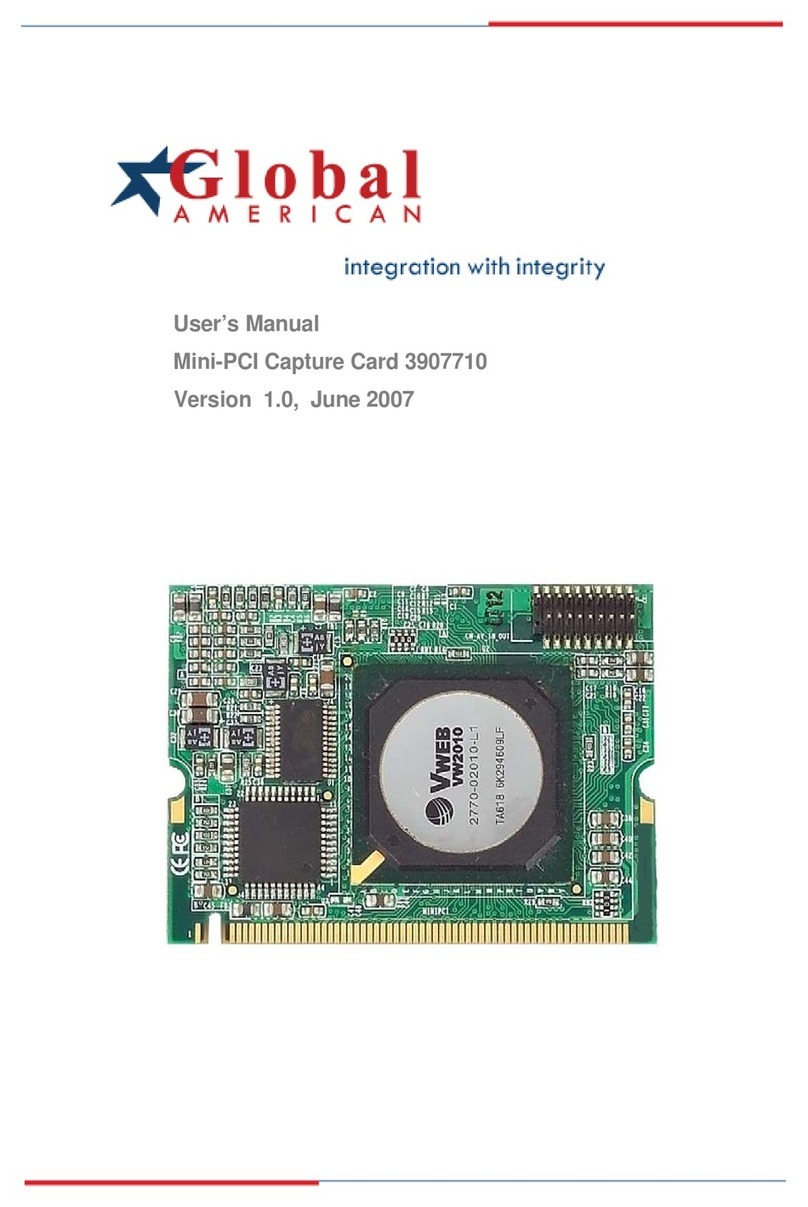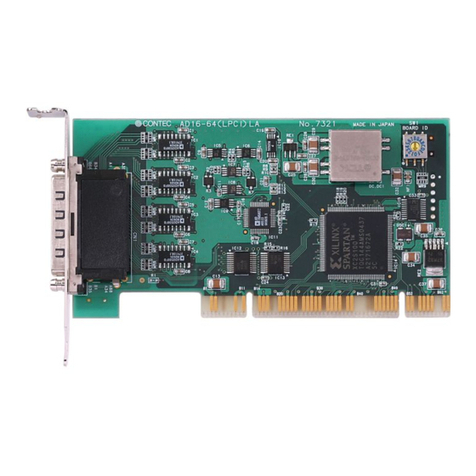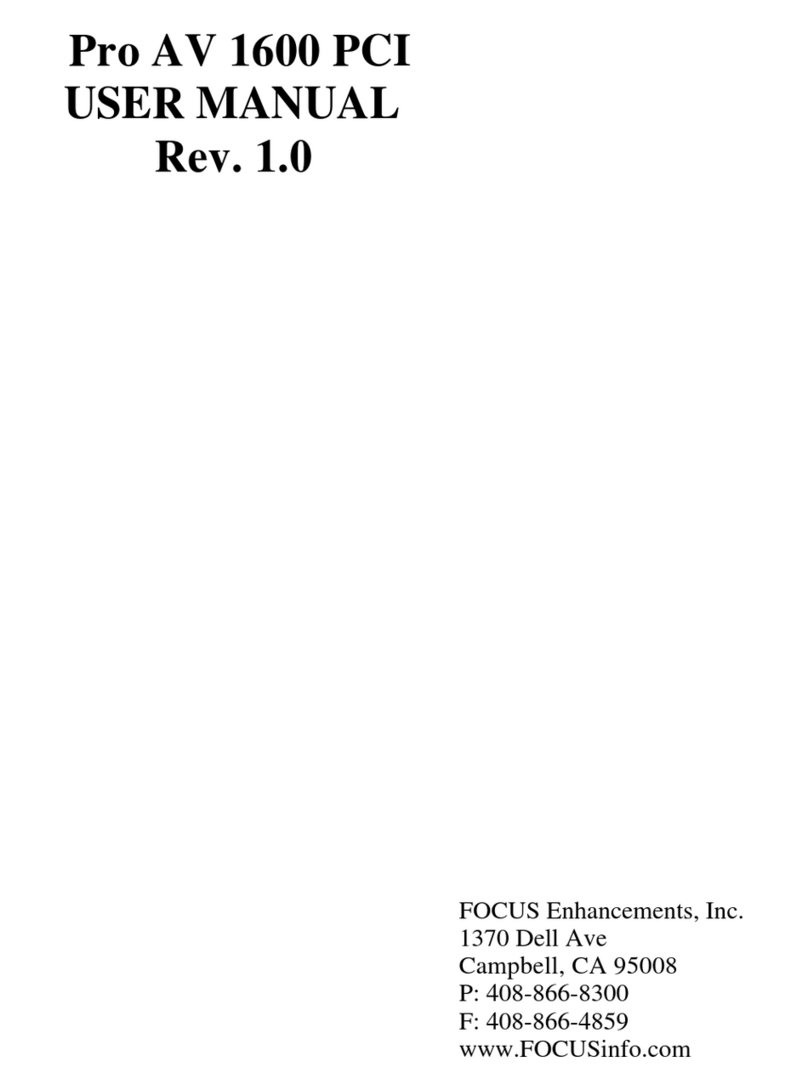Alpha Networks WMP-G07 User manual

User s Manual
WMP-G07

FCC Statement:
Thisdevice complieswith Part 15 of the FCC Rules. Operation is subject to the following two conditions:
(1) This device maynot cause harmful interference.
(2) Thisdevicemust acceptanyinterference received, including interference that maycause undesired
operation.
Thisequipment hasbeen tested and found to complywith the limitsfor a class Bdigital device, pursuant to
part 15 of the FCC Rules. These limitsaredesigned to provide reasonable protection against harmful
interference in a residential installation.
Thisequipment generates, uses and can radiate radio frequencyenergyand, if not installed and used in
accordance with the instructions, maycause harmful interference to radio communications. However,there
isno guaranteethat interference will not occurina particular installation. Ifthis equipment does cause
harmful interference to radio ortelevision reception, which can be determined byturning the equipment off
and on, the user is encouraged to tryto correct the interference byone or more of the following measures:
---Reorient or relocate the receiving antenna.
---Increase the separation between the equipment and receiver.
---Connect the equipment into an outlet on a circuit different from that to which the receiver is connected.
---Consult the dealer oran experienced radio/TV technician forhelp.
Installation and use of this WirelessLAN device mustbe in strict accordance with the instructions included
in the userdocumentation provided with the product.Anychanges or modifications (including the antennas)
madeto this device that are not expresslyapproved bythe manufacturermayvoid the user s authorityto
operate the equipment. The manufacturer isnotresponsiblefor anyradio ortelevision interferencecaused
byunauthorized modification of this device, orthe substitution of the connecting cablesand equipment
otherthan manufacturerspecified. It is the responsibilityofthe user to correct anyinterference caused by
such unauthorized modification, substitution or attachment. Manufacturer and its authorized resellers or
distributors will assume no liabilityfor anydamage or violation of governmentregulations arising from failing
to complywith these guidelines.
FCC RF Radiation Exposure Statement:

Thisequipment complies with FCC RF radiation exposure limitsset forth foran
uncontrolled environment. Thisequipment should be installed and operated witha minimum
distance of 20 centimeters between the radiatorand your body.
Modular Approval
Thisdevice is intended onlyform OEMintegrator underthe followingconditions:
1) The antenna must be installed such that 20cm is maintained between the antenna and users, and
2) The transmitter module maynot be co-located with anyothertransmitterorantenna.
IMPORTANTNOTE: In the event that these conditionscannot be met (forexample certain laptop
configurations or co-location with another transmitter), then the FCC authorization is no longer considered
valid and the FCC IDcannot be used on the final product.In these circumstances, the OEM integrator will
be responsible for re-evaluating the end product (including the transmitter) and obtaining a separate FCC
authorization.
End Product Labeling
This transmitter module isauthorized onlyfor usein deviceswherethe antennamaybe installed suchthat
20 cm maybemaintained between the antenna and users (for example accesspoints,routers,wireless
ADSLmodems, andsimilar equipment).The final end product mustbe labeled in visible area withthe
following:
“Contains TX FCC ID: RRK2005030148-1
End Product Manual Information
The usermanual for end usersmust include the following information in aprominent location “IMPORTANT
NOTE: TocomplywithFCC RF exposurecompliance requirements,the antenna used for thistransmitter
mustbe installed to provide aseparation distance of at least 20cm fromall persons and mustnot be
co-located or operating in conjunction with anyother antenna or transmitter.”

1.0Scope
1.1 Document
Thisdocumentis to specifythe productrequirements for 802.11b/g Mini-PCI Card. This
Mini-PCI Card is basedonAtheros AR5005GS chipset thatcomplied with IEEE 802.11b standard
from2.4~2.5GHz, and it canbe used toprovide up to11Mbps for IEEE 802.11band
54Mbps/108Mbps for 2.4GHz IEEE 802.11g to connect your wireless LAN.
Withseamlessroaming, fullyinteroperabilityandadvancedsecuritywith WEPstandard,
802.11b/g Mini-PCI Card offersabsolute interoperability withdifferentvendors 802.11b/g
Access Points throughthe wirelessLAN.
1.2 ProductFeatures
Ÿ Compatible withIEEE802.11bhighrate standardtoprovide wireless 11Mbps data rate
Ÿ Compatible withIEEE802.11ghigher speedstandard to provide wireless 54Mbps data rate,
andthe turbo modeof 108Mbps (For USA)
Ÿ Operationat2.4~2.5GHz frequencybandtomeetworldwide regulations
Ÿ Dynamic date rate scaling at 6, 9, 12, 18, 24, 36, 48, 54and108Mbps for802.11g
Ÿ Dynamic date rate scaling at 1, 2, 5.5,and11Mbps for IEEE802.11b
Ÿ Maximumreliability,throughput andconnectivity withautomatic datarate switching
Ÿ Supports wireless data encryption with 64/128/152-bitWEPforsecurity
Ÿ Supports infrastructure networks via AccessPointandad-hoc networkvia peer-to-peer
communication
Ÿ DualUFLantenna connectors fordiversity
Ÿ Support Super Gmode toprovide the higherdata rate andthroughput
Ÿ Supports WPAandAES enhancedsecurity
Ÿ Supports DFS/TPC forEuropean operation
Ÿ Supports VLAN tagging
Ÿ Friendly user configuration andutilities
Ÿ Drivers supportWindows 98SE,ME, 2K, andXP
Ÿ Supports Mini-PCI Type IIIB formfactor

2.0Requirements
The followingsections identifythedetailed requirements ofthe 802.11gMini-PCI Card.
2.1 Functional Block Diagram
PC
Mini-PCI
UFL
Connectors
Atheros AR2414
802.11b/g
MAC/BBP/Radio

2.2 General Requirements
2.2.1 IEEE 802.11b Section
# Feature Detailed Description
2.2.1.1 Standard Ÿ IEEE 802.11b
2.2.1.2 Radioand
Modulation
Schemes
Ÿ DQPSK,DBPSK,DSSS,andCCK
2.2.1.3 Operating
Frequency Ÿ 2400 ~2497MHz ISM band
2.2.1.4 Channel
Numbers Ÿ 11 channels for UnitedStates
13 channels for Europe Countries
14 channels for Japan
2.2.1.5 DataRate Ÿ 11, 5.5, 2, and 1Mbps
2.2.1.6 MediaAccess
Protocol Ÿ CSMA/CAwith ACK
2.2.1.7 Transmitter
OutputPower Ÿ Typical 18dBm at11, 5.5,2, and1Mbps
2.2.1.8 Receiver
Sensitivity Ÿ Typical –84dBmfor 11Mbps @ 8%PER
Ÿ Typical –90dBmfor 2Mbps @ 8%PER
2.2.2 IEEE 802.11g Section
# Feature Detailed Description
2.2.2.1 Standard Ÿ IEEE 802.11g
2.2.2.2 Radioand
Modulation
Schemes
Ÿ BPSK,QPSK,16QAM, 64QAM, andOFDM
2.2.2.3 Operating
Frequency Ÿ 2400 ~2497MHz ISM band
2.2.2.4 Channel Numbers
Ÿ 11 channels for UnitedStates
13 channels for Europe Countries
13 channels for Japan
2.2.2.5 DataRate Ÿ 54, 48, 36, 24, 18, 12, 9, and6Mbps
Ÿ 108Mbps forUSA only
2.2.2.6 MediaAccess
Protocol Ÿ CSMA/CAwith ACK
2.2.2.7 Transmitter
OutputPower Ÿ Typical RF OutputPower at eachData Rate
Ÿ +10 ~ 14dBmat54Mbps
Ÿ +11~15dBmat48Mbps
Ÿ +13 ~ 15dBmat36Mbps
Ÿ +17 ~ 18dBmat24,18, 12, 9, and6Mbps
2.2.2.8
Receiver
Ÿ
Typical
Sensitivityat WhichFrame (1000
-
byte

# Feature Detailed Description
Sensitivity PDUs) Error Rate =10%
Ÿ –87dBmat 6Mbps
Ÿ –86dBmat 9Mbps
Ÿ –85dBmat 12Mbps
Ÿ –83dBmat 18Mbps
Ÿ –80dBmat 24Mbps
Ÿ –76dBmat 36Mbps
Ÿ –71dBmat 48Mbps
Ÿ –66dBmat 54Mbps
2.2.3 General Section
# Feature Detailed Description
2.2.3.1 Antenna
Connector Ÿ Dual UFLantenna connectors
2.2.3.2 Operating
Voltage Ÿ 3.3VDC +/- 10%
2.2.3.3 Current
Consumption Ÿ 500mA at continuous transmit mode
Ÿ 300mAat continuous receive mode
Ÿ 30mAat sleepmode
2.2.3.4 Form Factorand
Interface Ÿ Mini-PCI Type IIIB formfactor
2.2.3.5 LEDs Ÿ ExternalLED functionsupported

2.3 Software Requirements
The Configuration Software supports Microsoft Windows 98SE, ME, 2000, and XP. This configuration software
includes the followingfunctions:
Ÿ Information
Information allows you tomonitornetworkstatus.
Ÿ Configuration
Configurationallows you toconfigure parameters forwireless networking.
Ÿ Security
Supports enhanced securityWEP, 802.1x,WPA.
2.3.1 Information
# Feature Detailed Description
2.3.1.1 General
Information Ÿ General Informationshowsthename of
Wireless Adapter,Adapter MACAddress,
RegulatoryDomain, Firmware Version, and
UtilityVersion.
2.3.1.2 CurrentLink
Information Ÿ Current LinkInformationshows theCurrent
SettingESSID, Channel Number,Associated
BSSID, Network Type (infrastructure or
Ad-hocnetwork), WEPStatus (enable or
disable), Link Status(Connect orDis-connect),
802.11gTransmit Speed(6, 9,12,18,24,36,
48, 54Mbps), 802.11b Transmit Speed(1, 2,
5.5, 11Mbps),Signal Strength, andLink
Quality.
2.3.1.3 Site survey Ÿ Tosearchthe neighboringaccesspoints and
displaytheinformationof all access points.
2.3.2 Configuration
# Feature Detailed Description
2.3.2.1 ESSID Ÿ InputanSSID number if the roamingfeature is
enabled
Ÿ Supports for ASCII printable characters.
2.3.2.2 Network Type Ÿ Ad-hoc Mode and802.11Ad-hoc Mode for
network configurations thatdo nothaveany
access points
Ÿ Infrastructure Mode for network
configurations withaccess points

# Feature Detailed Description
2.3.2.3 PowerSave Ÿ Extendthe batterylife of clients byallowing
the client tosleepforshort periods of time
while the Access Point buffersthe messages.
2.3.2.4 RTS Threshold Ÿ Setthe number of bytesusedforfragmentation
boundaryformessages
2.3.2.5 Fragment
Threshold Ÿ Setthe number of bytesusedforRTS/CTS
boundary
2.3.2.6 Transmission
Speed Ÿ This indicates the communicationrates. Select
appropriate transmissionspeedtomatchyour
wireless LAN settings
2.3.2.7 Roaming Ÿ SupportAutomatic or Manual Rescanto
associate withaccess point.
2.3.3 Security
# Feature Detailed Description
2.3.3.1 Encryption Ÿ RC4encryption algorithm
Ÿ Support 64/128/152bit WEP encryption
Ÿ Supportopen system andsharedkey
authentication
2.3.3.2 WEP
Management Ÿ Four WEPkeys canbe selected
Ÿ STAwith WEPoff willnever associate anyAP
with WEPenabled
Ÿ WEPKeyFormat: Option for Hex format
2.3.3.3 802.1x Ÿ Support EAP-TLS, EAP-TTLS,and
EAP-PEAP
2.3.3.4 WPA Ÿ Support WPA-PSKand WPA-EAP
Ÿ Support Cipher ModeAES andTKIP
2.4 Mechanical Requirements
# Feature Detailed Description
2.4.1 Length Ÿ 44.6mm
2.4.2 Width Ÿ 50.75mm
2.4.3 Height Ÿ 5mm
2.5 Compatibility Requirements
This device passes the followingcompatibilityrequirements.
# Feature Detailed Description
2.5.1 Wi-Fi Ÿ Meet Wi-Fi certification for IEEE802.11
product
2.5.2 WHQL Ÿ
Meetapplicable WHQLcertification

# Feature Detailed Description
requirements
2.5.3 Physical Layerand
Functionality Ÿ Meet ALPHA Engineering TestPlan andTest
Report
2.6 Requirements of Reliability, Maintainability and
Quality
# Feature Detailed Description
2.6.1 MTBF Ÿ MeanTime BetweenFailure >30,000hours
2.6.2 Maintainability Ÿ There is noscheduledpreventivemaintenance
required
2.6.3 Quality Ÿ The product qualityis followed-up by ALPHA
factoryquality controlsystem
2.7 Environmental Requirements
# Feature Detailed Description
2.7.1 Operating
Temperature
Conditions
ŸThe productis capable of continuous reliable
operationwhenoperatinginambient
temperature of 0 to+55 .
2.7.2 Non-Operating
Temperature
Conditions
Ÿ Neithersubassemblies isdamagednorthe
operational performance isdegradedwhen
restoredtotheoperatingtemperature after
exposingtostorage temperature inthe range
of –20 to +75 .
2.7.3 Operating
Humidity
conditions
Ÿ The product is capable of continuous reliable operation
when subjected to relative humidityin the rangeof10%
and 90% non-condensing.
2.7.4 Non-Operating
Humidity
Conditions
Ÿ The product is not damagednor the
performance is degraded afterexposure to
relative humidity ranging from 5% to95%
non-condensing

l TestProgram Operation Guide:
[Step1] Runprogram in Desktop at server(see Figure1) to open test window(see Figure 2).
(Figure 1)
(Figure 2)
[Step 2] (a) SelectGolden Card Type asyou need (WCBG09..A1), then click ”Golden Start”button (Figure
3).
(b) Figure 3 pops up. The emersionof DOS windowmeansGolden Unit is functioning well.
(Figure 3)
(Figure 4)

[Step 3] Select ”DUT PC”(Figure 5) and press ”ENTER”button to show the test (Figure 6)
(Figure 5)
(Figure 6)

[Step 4] press “setting ”and then show form Figure 7,enter Password “abcdef”will show Figure 8, press
“確定”button.
(Figure 7)
(Figure 8)
[Step 5] chose “setting->DUT setting”, will showFigure 9,and chose and set the testitem and equipment.
(Figure 9)

(Figure 10)
[Step 6] Scan the serial number on PCBA.
[Step 7] Start the testbyclicking “DUT Auto Test”button (see Figure 11).
(Figure 11)
Remark: Item 2 & 3 are for the Target Power Test, items 5 are forSpecMaskTest and item 6 is forTX and
RX LinkTest.
Table of contents
Other Alpha Networks PCI Card manuals
